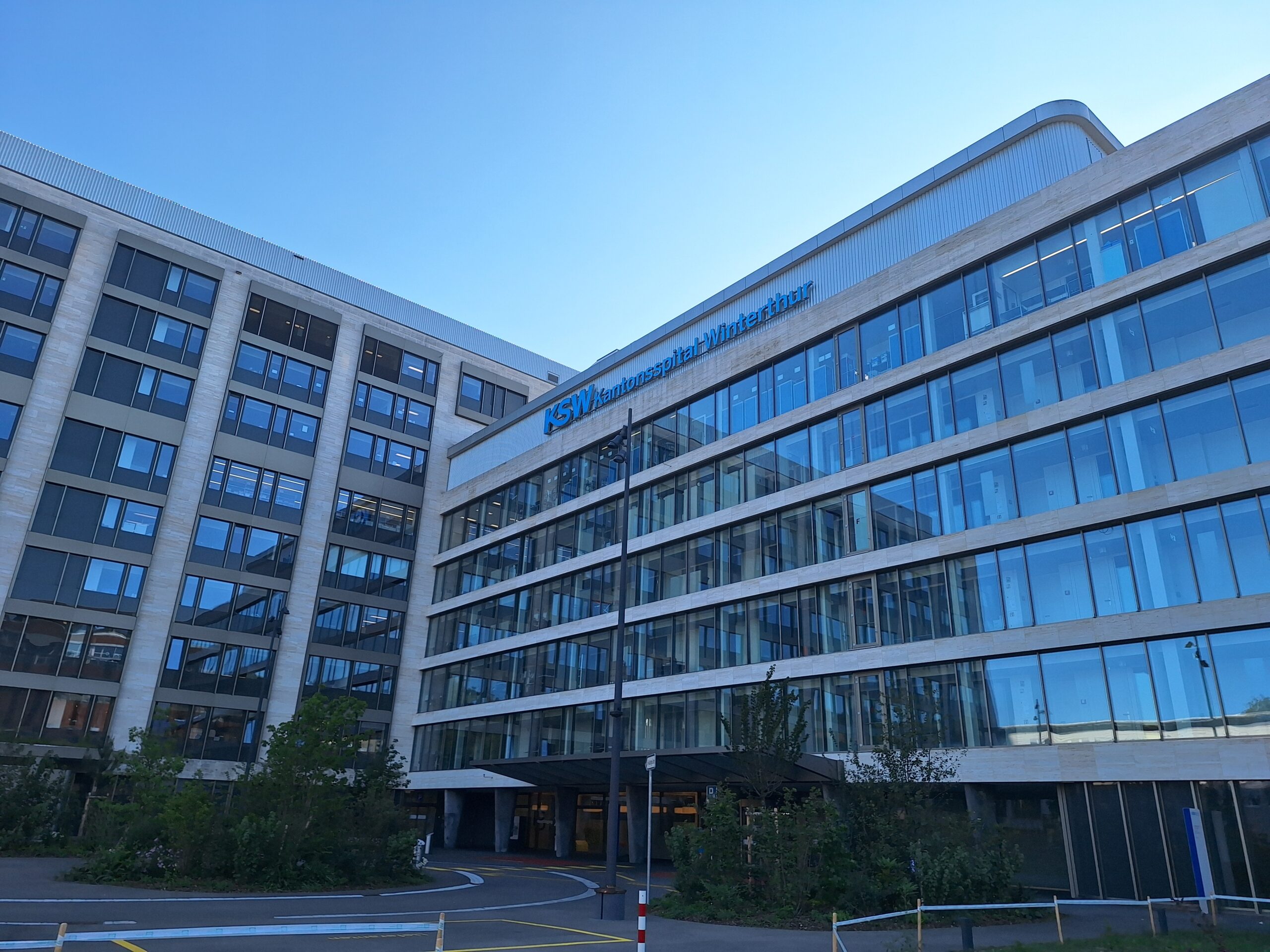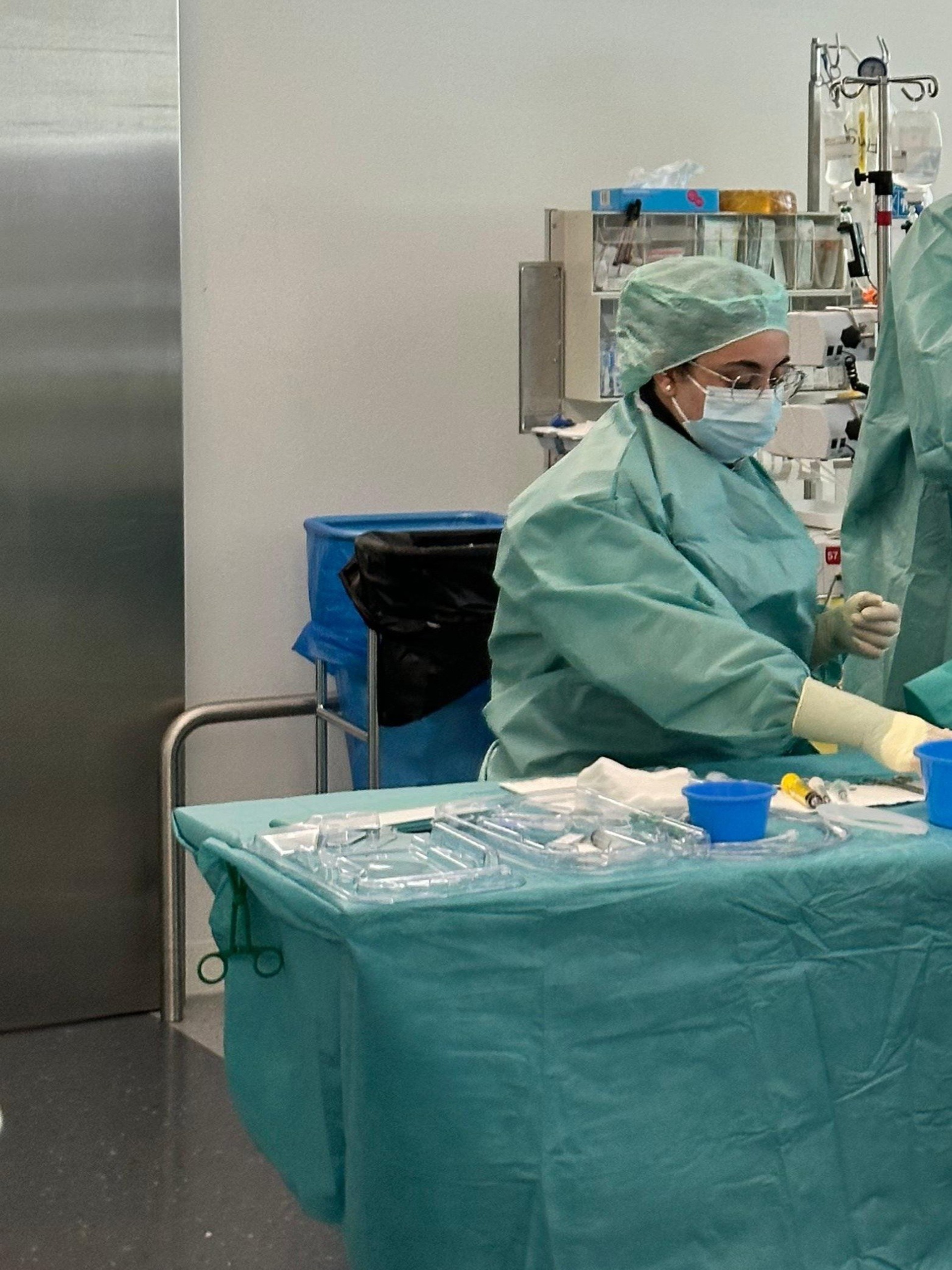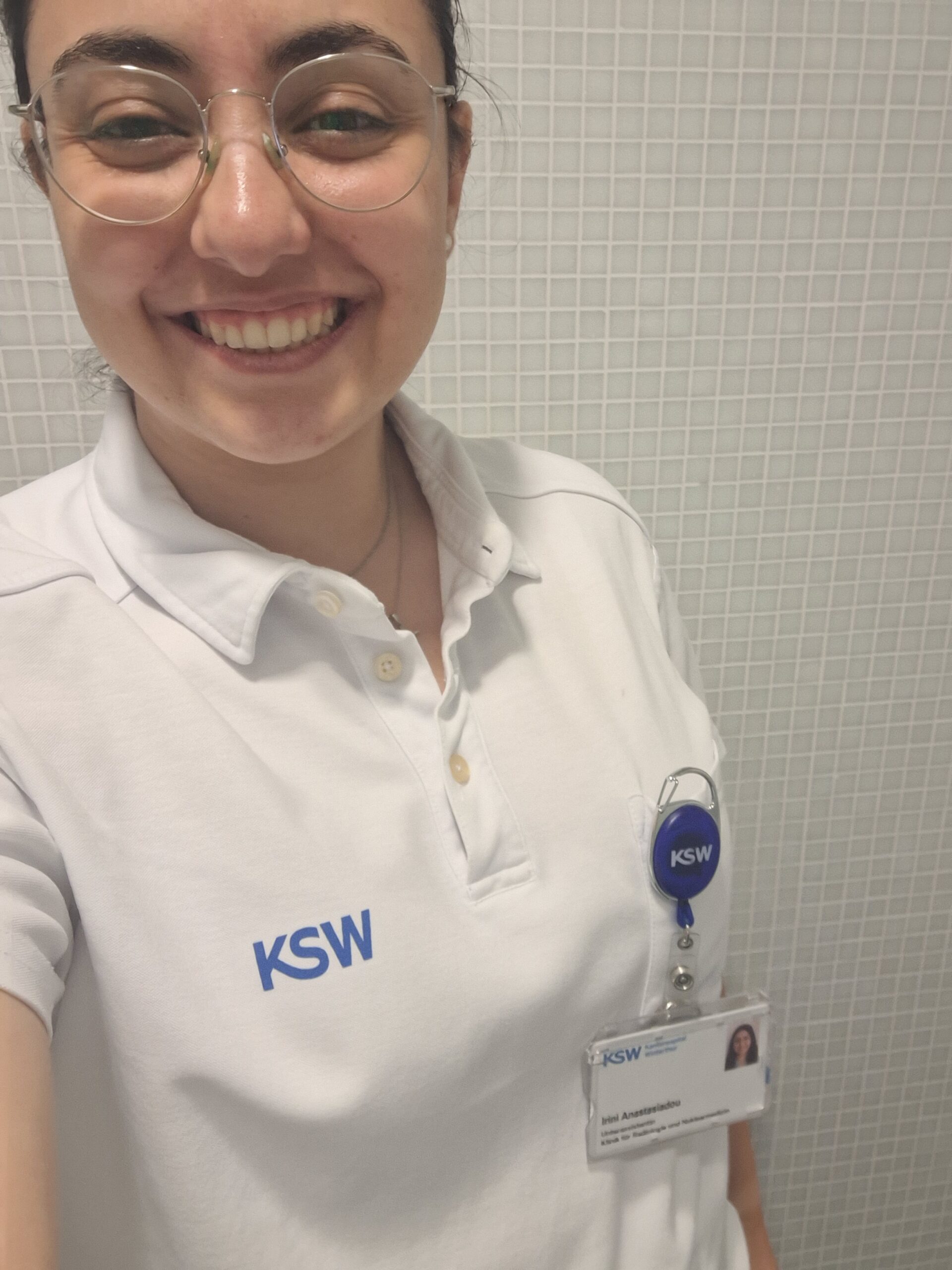Another aspect that left a lasting impression on me was the level of patient involvement during many of the procedures. Most of the interventions were performed under local anaesthesia, allowing patients to remain awake, comfortable, and even engaged throughout. The doctors and MTRAs maintained a calm, reassuring environment, often explaining the steps as they went along. Witnessing these interventions highlighted the importance of empathy, communication, and trust in procedural medicine – especially in a highly technical field like IR.
In addition to the clinical work, I also had the opportunity to participate in several teaching sessions organized by the Radiology Department and the Hospital. On my final day, I had the chance to present an interesting case I observed during my first week. This allowed me to explore the case in detail, research current literature, and share my findings with the team, which was an educational and rewarding experience.
Throughout my stay, I always felt welcomed and supported. The doctors and residents were generous with their time and took care to explain procedures, materials, and treatment plans in detail. I am especially grateful to Dr. Arash Najafi, who was the main contact person for this internship. I also want to thank all the doctors and MTRAs in the department, who consistently encouraged my learning and made sure every question was addressed.
By the end of the two weeks, I felt both sad and grateful: sad that the experience had come to an end, but grateful to leave with new knowledge and hands-on exposure.
A big thank you to CIRSE Students for this initiative and their continued support — not only for this internship but throughout all the conferences I have had the pleasure of attending. A student internship is not only a great way to deepen your understanding of the healthcare system and the daily workings of an IR department, but also a wonderful opportunity to explore a new city and culture.
Over the past three years, I have come to appreciate how interventional radiologists genuinely support and mentor students — whether by teaching during conferences or welcoming them into their departments. This openness is truly remarkable. The CIRSE Student Internship Programme is the perfect opportunity for anyone who wants to explore IR or expand their knowledge in this fast-growing field of medicine.




